Occultation in Texas
My son and I intercepted the total solar eclipse on April 8. It was even more remarkable — larger, darker, spookier — than the only other we’ve seen in Wyoming in 2017.
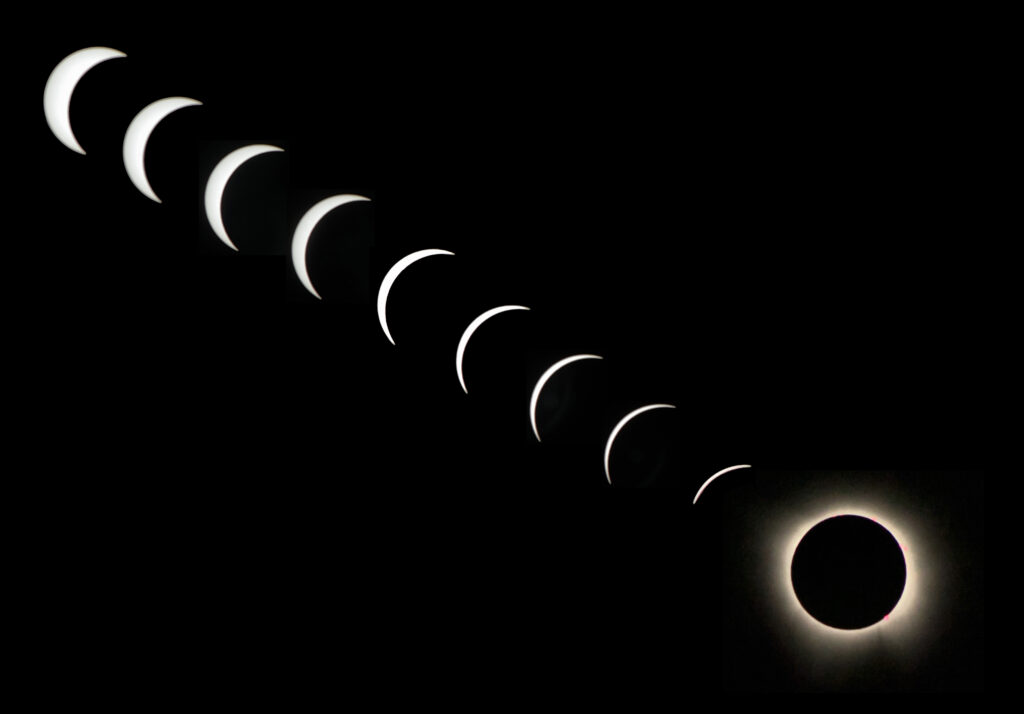
We were relatively unprepared for the one seven years ago (eye protection, yes; ways to capture the experience, not really). But since then — and with the help of an annular eclipse dry run last October — we were ready this time. We knew we wanted to be as near the centerline as possible but with the ability to call a cloud cover audible if needed.
On the morning of the eclipse we headed south from Fort Worth, Texas to a small town called Hillsboro (excuse me, Eclipseboro) but upon arrival determined the clouds were too risky. So we motored northwest, giving up about a minute of totality for what we hoped were clearer skies. Destination: Glen Rose. We found a public park on a branch of the Paluxy River right in town and set up shop.
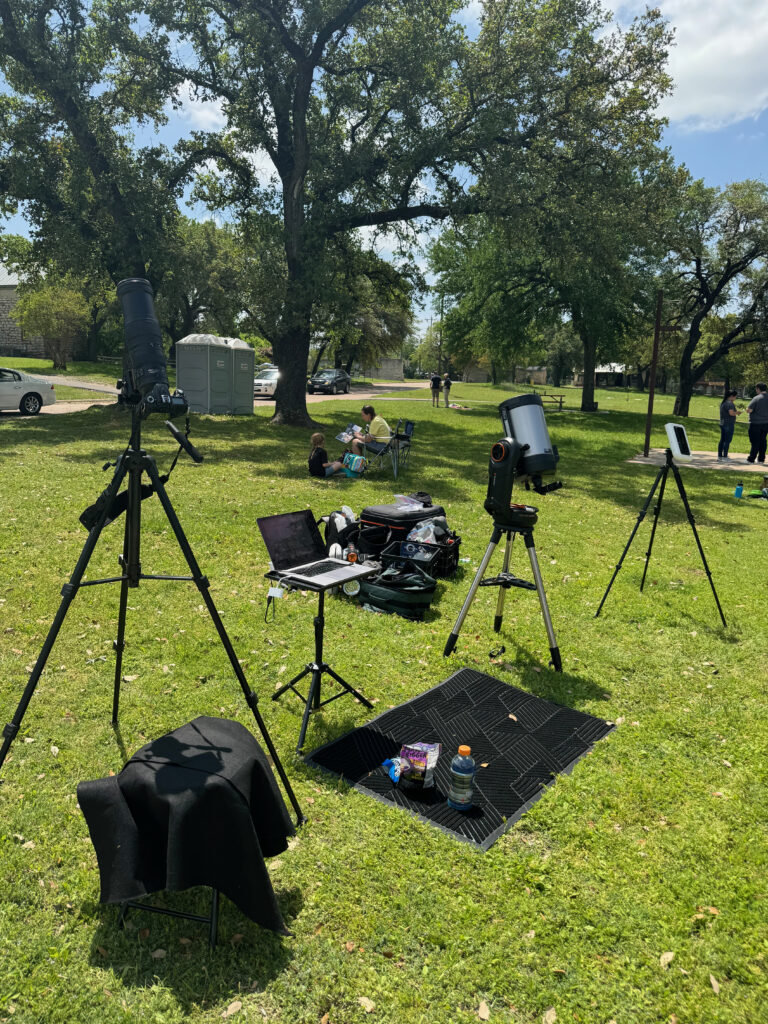
We had three viewing rigs:
- Nikon D90 dSLR + Nikkor zoom lens (AF-S 200-500mm f/5.6E ED VR) + Haida solar filter. This was controlled via USB connected to a MacBook running AstroDSLR, mostly to relieve the tedium and distraction of snapping lots of photos during totality but also to avoid slightly jiggling the rig with a button press on the camera body.
- Celestron NexStar Evolution 8″ telescope + solar filter. I never did turn tracking on as the sun was fairly easy to spot. I probably should have enabled it though. (Next time!)
- The new Vaonis Hestia mount for iPhone. This small white box held the phone in place over its magnifying ocular (with solar filter) allowing photography and on-device processing in real time. I used an iPhone 15 Pro Max. It captured remarkably good photos, such as the composite above.
Having done this a few times by this point I was looking forward to the mix of normal people just out to have their minds blown (often with small children) and giant astronomy nerds ready to shout “first contact!” and similar at every moment of the event. I suppose there are other types of people who show up for eclipses — astrology zealots, doomsday cultists, daytime-curious vampires — though none did where we watched unfortunately.
The moments approaching totality were especially surreal as the day, which normally darkens from a fixed point on the western horizon, got shimmeringly dark from everywhere at once. Light through leaves and colander holes reminded us that our celestial flashlight was no longer circular. We peered through obsidian glass (supposedly used by ancient Mayans to view eclipses, which they accurately predicted). While the obsidian monocle seemed just as dark/protective as our ISO-certified glasses in hindsight maybe I should have verified that.
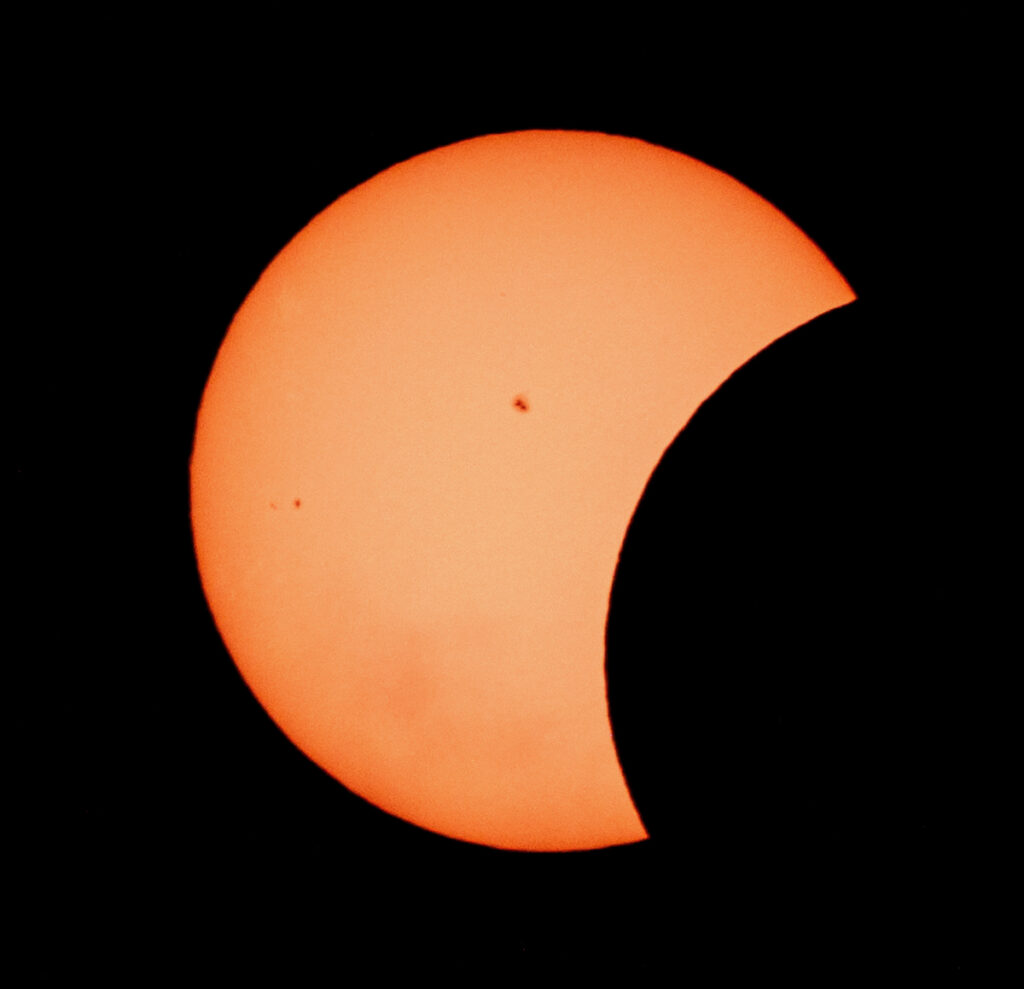
And then it went dark and the protective eyewear finally came off. I’m sure I could look it up to confirm or deny, but it felt like the sun-moon duo was closer in space to us than in 2017 because that scary black hole in the sky looked much bigger. Loopy prominences licked around the edge of the disc while we stared up slack-jawed for both the longest and shortest three minutes and fifteen seconds of our earthbound existence. I couldn’t help but think about how terrifying it all would have seemed for pre-scientific peoples viewing a total solar eclipse. A few minutes of inexplicable darkness and then … right back to normal. (A Navajo friend of mine noted that his people do not view the eclipse as a matter of respect. Tradition holds that it is a time of intimacy between the sun and the moon. Voyeurism is impolite.)
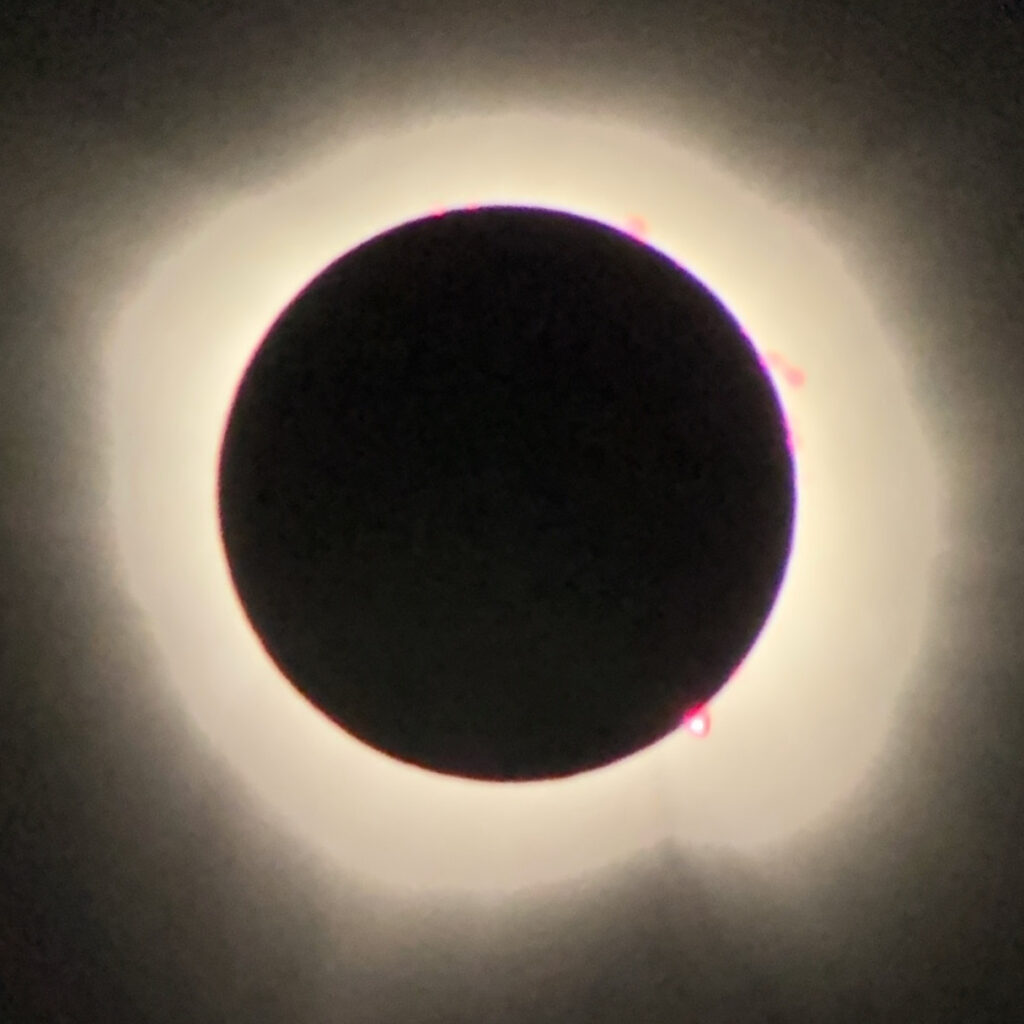
While we were dumbstruck in Texas (and as my other son was preparing for the umbra hurtling away from us and towards him in Vermont at 2,000 MPH) my wife was on an airplane over Ohio. She noticed little crescent-shaped sparkles on the cabin wall next to her window seat. This disco ball effect was caused by reflections from the partially-eclipsed sun glinting off her wedding ring! As my wife was the only person in her section who brought eclipse glasses, she eventually had the whole cabin at her seat staring at our moon nudging in front of our star.
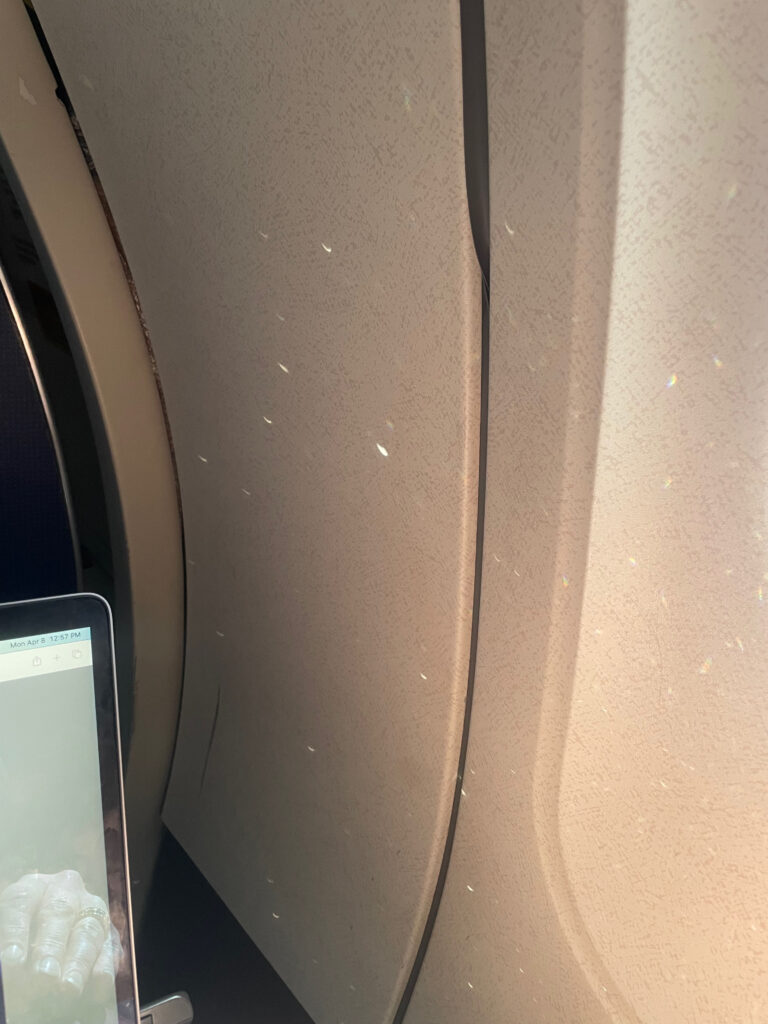
On the drive down from Denver I learned quite by chance that helium is so named because its presence was spectroscopically determined during an 1868 eclipse in India. The chance part of my learning this was due to my stopping at the Helium Time Columns Monument time capsule in Amarillo, Texas — former site of our nation’s strategic helium reserve. Even though helium is the second most abundant element in the universe, those dirigibles and zeppelins weren’t gonna inflate (or blow up) themselves. So America stockpiled.
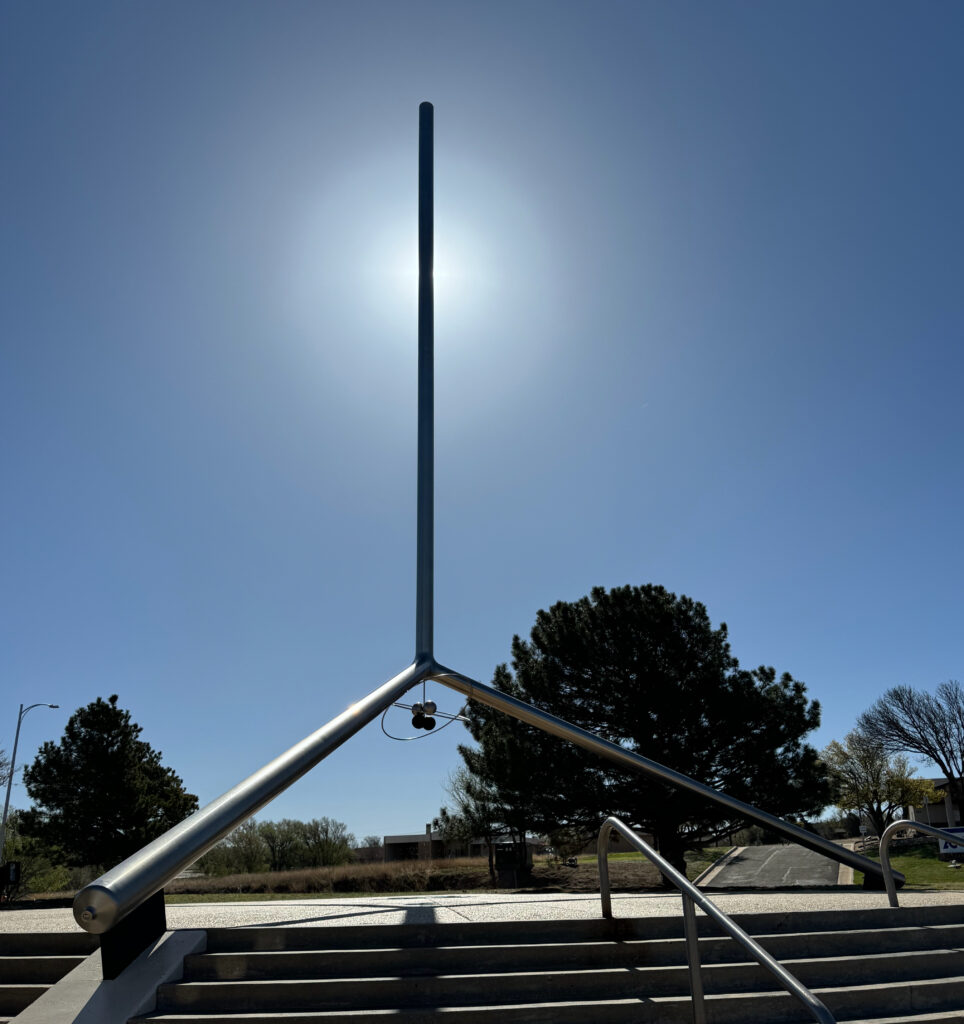
But back to Glen Rose. Other than being in the crosshairs of totality, this pretty little town is the jumping off point for two related points of extreme cognitive dissonance.
The Paluxy River flows right through town and into Dinosaur Valley State Park, where over the last millions of years it has eroded various types of rock to expose Early Cretaceous dinosaur tracks of both sauropods and theropods. The fun thing about these trace fossils is that they exist almost exclusively in the flowing riverbed itself. You gotta wade if you wanna nerd up. Often because of high water the tracks are not visible at all. But on my visit they were on full display. It was rainy and wet (obviously) which gave the expedition a slight air of danger but the park is well-signposted and easily accessible. Plus, with water continuing to erode the riverbed, this priceless evidence of dinosaur behavior is slowly being erased. Catch them while you can. (Or go see this entire section that was lifted out and sent to the American Museum of Natural History in NYC.)
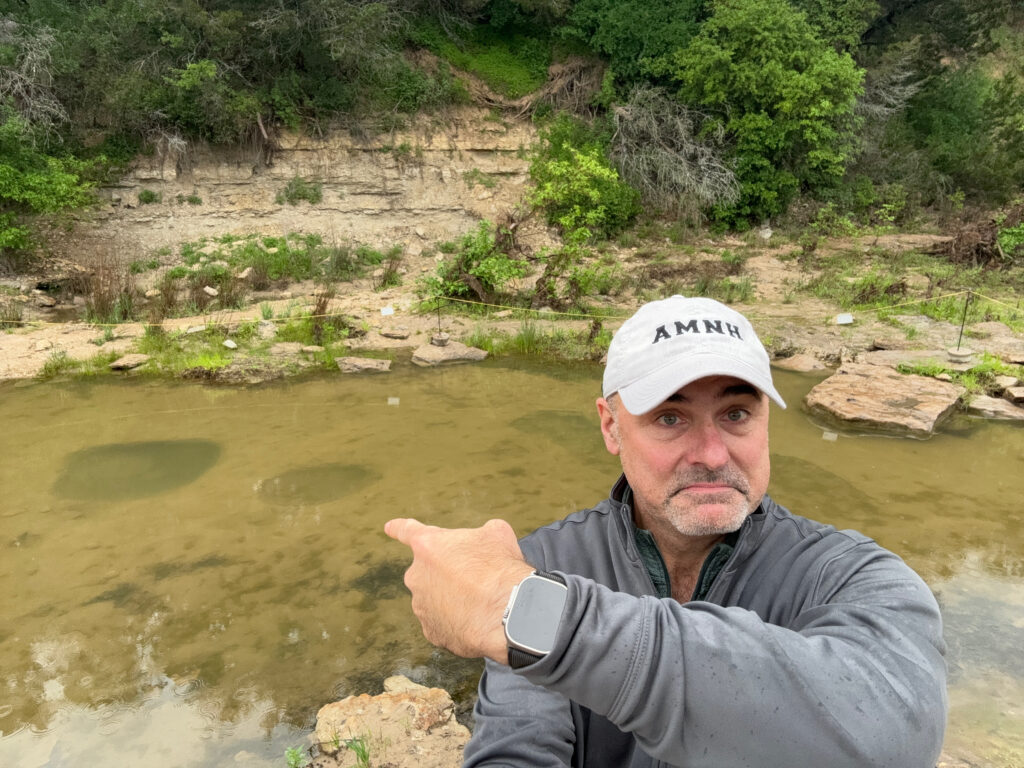
But scientific artifacts are not the only thing this river has gurgled up. Glen Rose is also home to the Creation Evidence Museum where tracks lifted from the Paluxy are purported to prove that humans lived side-by-side with dinosaurs, Flintstones-style, which of course thus proves biblical creationism, an earth only 6000 years old, and other utter fictions. The contortions this museum wriggles itself into to prove that the fossil record synchs with the bible are comical: mapping geological epochs to precise days of biblical flood, building a model of an ark complete with holding zones for Tyrannosaurus rex (seems unwise, Noah), and a giant hyperbaric chamber meant to recreate conditions for bringing non-avian dinosaurs back to life. What.
The centerpiece of the museum are tracks that show impressions of human footprints next to or overlaid on dinosaur tracks. Most of the footprints are deliberate fakes created to sell during the Great Depression but the urge to validate an already-held belief can be powerful and sometimes you build an entire fantasyland around that. Of course, there’s margin for error in all paleontological and geological time estimates but being off by 100 million years is, you know, well outside that margin. We actually find evidence of ancient peoples next to dinosaur tracks all the time. They were as fascinated by fossils as modern humans are, but that doesn’t mean that humans rode Velociraptors bare-back.
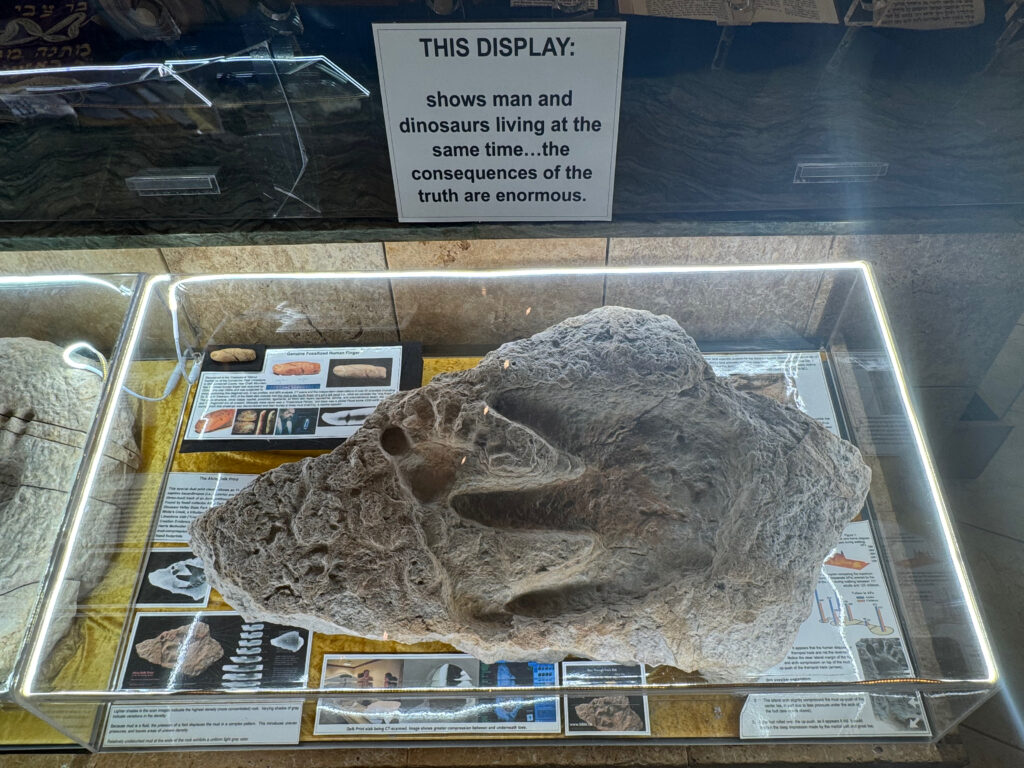
It was difficult to maintain a straight face in this place, I admit. The cartoonishly white-coated and goggled “scientists” running around a lab full of seemingly legit equipment (what exactly were they testing?); the bus full of home-schooled kids, grist for the generational conspiracy theorist pipeline; the non sequitur side exhibit on the moon landing (presented as real, not a conspiracy — possibly meant to allay fears that the curators are complete crackpots). An entire universe of fallacy meant to make people feel good about not questioning their faith.
We don’t still believe eclipses are a dragon eating the sun, or celestial gods at war, or even a moment of intimacy (the Navajo offer this respect out of cultural tradition). Science advances because we constantly question it. It’s how we discover helium. It’s how we verify Einstein’s General Theory of Relativity. It’s how we know exactly where to stand in a beautiful little town in Texas to view a rare astronomical event. So, thank you, science. And thank you Creation Evidence Museum, for the concise if troubling example of what happens when you want to be comfortable in belief rather than disquieted by truth. Go see the next total solar eclipse, friends. (Or better yet, go see the 2027 eclipse over the pyramids of Egypt!).
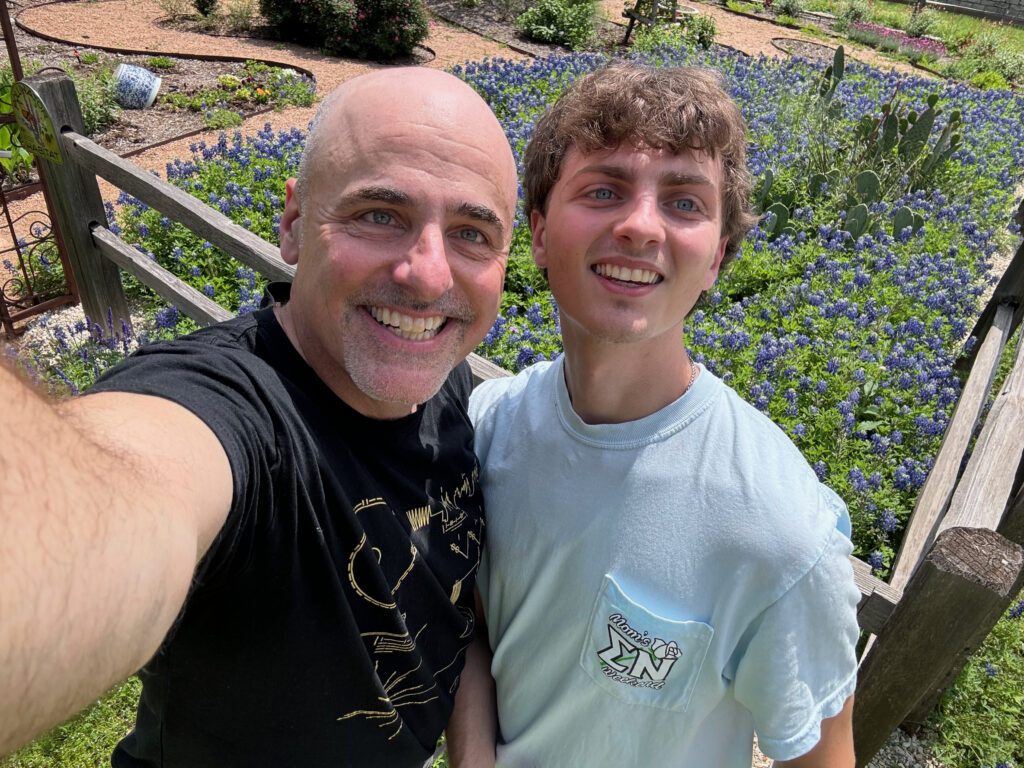
Itinerary footnote: this journey included a few other stops related to dinosaurs and crazy right-wingers: An easy hike to the KT boundary in Trinidad Lake State Park (lots of shocked quartz layers from the meteor impact that ended the reign of the dinosaurs 66 million years ago); the excellent dinosaur trackways of Clayton Lake State Park in New Mexico, where tracks became visible when a reservoir spillway was constructed decades ago; and Bishop Castle, the monomaniacal building project of a father-son duo in rural Colorado that is what happens when someone really loves the garden gnome aesthetic and spatial logic of M.C. Escher while also hating workplace safety and all forms of government.













